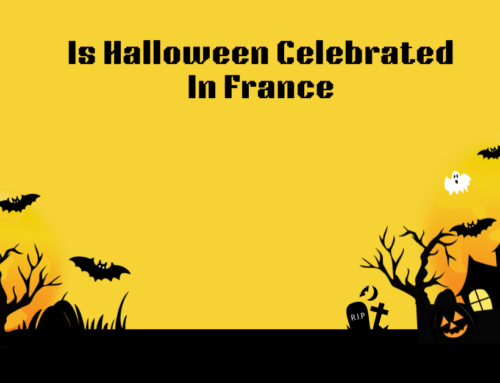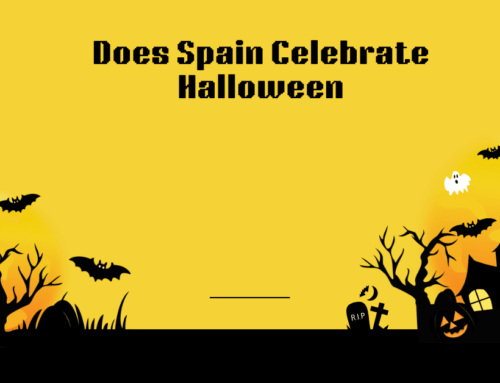In recent years, the spooky silhouettes of jack-o’-lanterns and the playful chants of “trick or treat” have begun to echo through the cobblestone streets of Italy. This raises an intriguing question: Does Italy celebrate Halloween? The answer is not as straightforward as one might think.
Let’s explore the complex relationship between Italy and this autumn festival that has its roots in Celtic traditions and American pop culture.
Traditional Italian Autumn Festivals
Before we delve into Italy’s adoption of Halloween, it’s essential to understand the country’s own autumnal traditions. Italy has long-standing celebrations that coincide with the time of year when Halloween is typically observed.
All Saints’ Day (Ognissanti)
On November 1st, Italians celebrate All Saints’ Day, known locally as “Ognissanti.” This Catholic holiday honors all saints, known and unknown. It’s a day of religious observance, often marked by:
- Attending mass
- Visiting family graves
- Gathering for family meals
All Souls’ Day (Il Giorno dei Morti)
Following All Saints’ Day, November 2nd marks All Souls’ Day or “Il Giorno dei Morti” (The Day of the Dead). This day is dedicated to remembering deceased loved ones. Traditional activities include:
- Leaving flowers, typically chrysanthemums, on graves
- Lighting candles in memory of the departed
- Preparing special foods, such as “fave dei morti” (beans of the dead) cookies in some regions
These deeply rooted traditions have long satisfied Italians’ need for autumnal and spiritual observances, which partly explains why Halloween was slow to gain a foothold in Italian culture.

Introduction of Halloween to Italy
Halloween’s arrival in Italy is a relatively recent phenomenon, gaining noticeable traction only in the late 1990s and early 2000s. Several factors contributed to its introduction:
- Globalization and American cultural influence
- The spread of English language learning, exposing more Italians to Anglo-Saxon traditions
- Media and pop culture, including American movies and TV shows featuring Halloween
Initially, many Italians viewed Halloween with skepticism, seeing it as a commercial import that threatened to overshadow their traditional celebrations. However, younger generations, in particular, began to embrace the fun and festive aspects of the holiday.
Current Halloween Celebrations in Italy
Today, Halloween celebrations in Italy vary widely depending on the region and the demographics of the area. In larger cities and areas with significant international populations, you’re more likely to find Halloween events and activities.
Popular Halloween Activities in Italy
While not as widespread as in the United States or the United Kingdom, some Halloween traditions have taken root in Italy:
- Costume parties: Many bars, clubs, and private homes host Halloween-themed parties.
- Themed events: Museums, theaters, and even some historic sites organize special Halloween tours or performances.
- Decorations: Some shops and restaurants embrace the holiday with pumpkins, witches, and other spooky decor.
- Trick-or-treating: This practice is less common but can be found in certain neighborhoods, especially those with many expats.

Regional Differences
The level of Halloween celebration varies significantly across Italy:
- Northern Italy, particularly in more cosmopolitan cities like Milan, tends to have more Halloween events.
- Central Italy, including Rome, often sees a mix of traditional All Saints’ Day observances and modern Halloween parties.
- Southern Italy generally maintains a stronger focus on traditional festivals, with Halloween having less of a presence.
Italian Attitudes Towards Halloween
The reception of Halloween in Italy is far from uniform. Opinions often split along generational lines:
- Younger Italians: Many embrace Halloween as a fun opportunity for socializing and dressing up.
- Older generations: Some view the holiday with suspicion, seeing it as a threat to Italian cultural traditions.
- Cultural preservationists: There are concerns about the commercialization and potential Americanization of Italian culture.
Despite these mixed feelings, Halloween has found a niche in Italy, adapting and evolving to fit within the Italian cultural context.
Unique Italian Twists on Halloween
As with many imported traditions, Italians have put their own spin on Halloween celebrations:
Italian-Inspired Costumes
While classic Halloween costumes are popular, many Italians incorporate elements of their own history and folklore into their outfits:
- Ancient Roman figures
- Characters from Italian literature and opera
- Traditional regional attire with a spooky twist
Halloween-Inspired Italian Cuisine
Italian chefs and home cooks have begun creating Halloween-themed dishes that blend traditional Italian flavors with spooky presentations:
- Risotto nero (black risotto) colored with squid ink and shaped like a spider
- Pumpkin-filled ravioli with sage butter sauce
- “Bloody” pizza with tomato sauce and mozzarella shaped like ghosts

Incorporation of Local Traditions
Some communities have found ways to merge Halloween with their existing autumn festivals:
- In Sardinia, some towns combine Halloween parties with their traditional Su Mortu Mortu celebration.
- In Triora, known as the “Salem of Italy” due to its witch trial history, Halloween has become part of a larger witch-themed tourism industry.
Future of Halloween in Italy
As Halloween continues to evolve in Italy, several trends are emerging:
- Increased commercialization: More Italian businesses are capitalizing on Halloween as a marketing opportunity.
- Cultural fusion: There’s a growing trend of blending Halloween elements with traditional Italian autumn festivals.
- Educational opportunities: Some schools use Halloween as a chance to teach about cultural exchange and English language traditions.
However, it’s unlikely that Halloween will ever fully replace or overshadow Italy’s deeply ingrained All Saints’ Day and All Souls’ Day traditions. Instead, we’re seeing the development of a uniquely Italian approach to Halloween – one that respects local customs while embracing the playful aspects of this imported holiday.

Conclusion
So, does Italy celebrate Halloween? The answer is: increasingly, yes, but in its own distinct way. Halloween in Italy is a fascinating case study in cultural adaptation. It demonstrates how globalization can introduce new traditions without necessarily erasing existing ones.
As Italy continues to negotiate its relationship with Halloween, we’re likely to see further evolution of this holiday within the Italian context. It serves as a reminder that cultures are not static, but dynamic and ever-changing, capable of incorporating new elements while maintaining their core identity.
Whether you find yourself in Rome, Florence, or a small Tuscan village on October 31st, you might just hear a faint “dolcetto o scherzetto” (trick or treat) echoing through the streets – a small but growing sign of Italy’s own Halloween tradition in the making.






